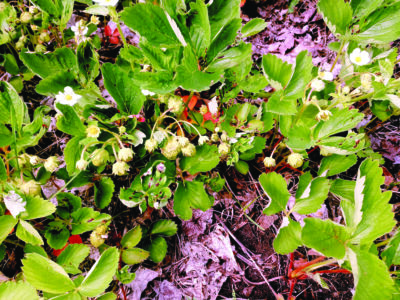Honoring their name
John & Phyllis Seaman fund curator position, student workers at Seaman Mineral Museum

Garrett Neese/Daily Mining Gazette John Jaszczak, director and curator of the A.E. Seaman Mineral Museum, stands by a display case honoring Seaman, who founded the museum 120 years ago. John and Phyllis Seaman, Seaman's grandson and his wife, endowed the curator position in honor of John's 103rd birthday.
HOUGHTON — It’s been 31 years, but John Jaszczak still remembers his first visit to the A.E. Seaman Mineral Museum.
“When the elevator doors opened to the fifth floor of the EERC (Electrical Energy Resources Center) building, I couldn’t believe it,” Jaszczak said.
Since then, Jaszczak, a physics professor at Michigan Technological University, has become director and curator of the museum. Twenty years after that visit, the museum moved from the EERC to a new 8,000-square-foot building along Sharon Avenue.
But a recent gift from the Seaman family ensures that the museum will be around to inspire more reactions like Jaszczak’s for generations to come.
In May, John “Jack” and Phyllis Seaman gave an endowment to the museum in honor of Jack’s 103rd birthday. His grandfather, Arthur Edmund Seaman, founded the museum 120 years ago. His father, Wyllys A. Seaman, served as its third curator.
The John and Phyllis Seaman Endowment for Curation of the A. E. Seaman Mineral Museum gives perpetual support for the curator position.
They also established a support fund for students involved with the museum. It was dedicated in honor of two of Wyllys Seaman’s geology students — Jean Petermann Kemp Zimmer, a 1939 graduate who later served as museum curator from 1975 to 1986, and Jack’s sister, Jeanne Seaman Farnum.
The Seamans have long been benefactors of the museum. Jaszczak remembered meeting Jack for the first time during the museum’s 100th anniversary gala, when 26 Seaman descendants visited.
“He has fond memories of his grandfather, he still remembers all the street names and families,” Jaszczak said. “They also wanted to honor the legacy of his father and his grandfather, who were both curators, and also to really support the collection itself, its care and its use.”
One part of the curator’s responsibility is taking care of the collection — acquiring, cataloguing and cleaning the minerals, which now number about 40,000 pieces. About a tenth of those are on display. In addition to the museum, it has satellite exhibits around the Upper Peninsula and downstate. Museum staff also visit mineral shows in places like Detroit and Tucson, Arizona.
Sometimes, Jaszczak tries to display a mineral in its typical form so that visitors might be able to recognize it on the beach. But for the most part, it’s about displaying the best specimens– looking at size, color, durability and well-formed crystals.
He pointed out his favorite specimen, a copper-included calcite crystal in a twin formation.
“That precise way they’ve grown together, it’s like a butterfly,” he said. “It gives it a growth advantage … I like the way it tells a physics story about its history.”
Another piece in the collection has a personal connection to Jaszczak. He helped confirm the existence of a new mineral — a combination of molybdenum, lead and sulfur that occurs in the form of tiny whiskers on more common types of minerals. He helped to name the mineral — merelaniite, in honor of the Merelani mining district in Tanzania.
Part of being a curator also means helping identify things people bring in — or better, donate to the museum. Jaszczak showed one recent donation — a copper chisel fan made by a miner.
“They just thought, ‘It’s time for this to come home,'” he said. “It was in New Mexico, but it’s from the Central Mine, and they wanted it to be back here again.”
Exhibits, and the museum, are always evolving. The display cases, built in the 1970s, recently had their plywood doors replaced by cherry doors for a more appealing look. The museum is also adding new wayfinding signs.
In 2015, Tech finalized an agreement to share ownership of items from the collection of geologist Douglass Houghton, which had been in the care of the University of Michigan. A number of the labels bear his handwriting. One piece of copper may have come off the famed Ontonagon boulder.
The museum is also getting ultraviolet flashlights to help students experience the most popular part of the museum — the fluorescent minerals.
Jaszczak is also working with teachers to start developing curricula they can use before and after their field trips to the museum.
“Maybe they’re not going to be mineral collectors, maybe they will,” he said. “Maybe they’re not going to be scientists, maybe they will. I think it’s an important part of Michigan history, local heritage, scientific awareness and just aesthetic appeal.”




